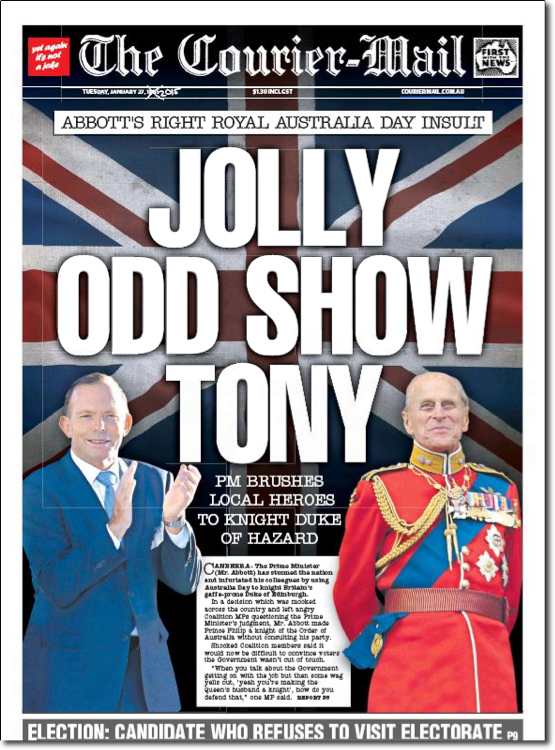Dateline returns … sort of. Dateline’s first episode of 2015 airs at 9.30pm on SBS tonight, and it’s a best-of special, the first of three to air in the next fortnight.
Dateline has been trimmed to a half-hour program in 2015, and returns with a reduced staff, after many of the program’s previous VJs (video journalists), producers and support staff were turfed out in a dramatic and largely unexpected purge late last year that followed one of the show’s supervising producers, Allan Hogan, revealing management was out to gut the program while cutting its budget. SBS news boss Jim Carroll last year claimed the changes to Dateline would enable it to better meet the preferences of its audiences — but it’ll be a while before what exactly that means is revealed. We do know it won’t have a presenter, and, according to emails sent to staff by Carroll, will have “an increased number of single issue or single event documentaries and original content across the entire season”. — Myriam Robin
Pretty fly for a white guy. It’s been a constant source of criticism of Triple J’s annual Hottest 100 that the listener poll of the best songs of the year tends to throw up few female artists, instead favouring white, male bands. Adelaide-based mathematician Casey Briggs yesterday put up a series of charts on his blog highlighting just how skewed the Hottest 100 is.
Of the total 273 musicians involved in the 100 songs in this year’s countdown, only 34 were women. Break down the entries by song, and the figure is a little more equal — 21 of the 100 ensembles in the Hottest 100 had a significant female presence.
This reveals that the women on the Hottest 100 tend to be the sole artists credited on their winning songs, while men are more likely to have a hit for their performance in a band. On the dearth of women, an earlier analysis conducted by Briggs averaging out the figures over a 20-year period suggests the situation has improved only marginally this year on the historical average.
Incidentally, the inclusion of Taylor Swift, controversially disqualified by Triple J after a BuzzFeed-led campaign to see her elected to the countdown, wouldn’t have changed the statistics on gender. The 100th-placed song that would have been displaced was 18 year old Adelaide rapper Tkay Maidza. It would, however, have removed one person of colour from the tally. Briggs counted only 13 songs in the Hottest 100 that were credited to at least one person of colour.
If you’re the betting type, Briggs’ analysis shows predictive Twitter accounts like the Social Hottest are pretty good indicators of the most-voted-on tracks (though the Social Hottest didn’t manage to pick the No. 1 song in the right spot). — Myriam Robin (all graphs courtesy of Casey Briggs)
Sports UnIllustrated. Sports Illustrated, America’s pre-eminent sports magazine, last week sacked all of its photojournalism staff, citing cost reasons. From now on, according to the National Press Photographers Association, the magazine will use pics supplied by freelancers and agencies (such as the Associated Press or Getty Images). Six photographers at the sports magazine were sacked in a company-wide move to “restructure various departments” late last week.
Sports Illustrated is owned by Time Inc, the magazine side of Time Warner, which was spun off midway through 2014. At least six other staff were also made redundant late last week at the magazine. In addition to the photojournalism staff, two writers and two editors for Sports Illustrated were also sacked. — Glenn Dyer
Women do business too. Bloomberg News has hit on one way to solve the perennial shortage of female voices in business coverage: through quotas. According to a note sent by Bloomberg News editor-in-chief Matthew Winkler that was passed on to TalkingBizNews.com:
“‘All Bloomberg News enterprise work must include at least one woman’s voice, and preferably a balance of men and women. Women are engaged in every topic we cover. Our journalism should reflect that variety,’ Winkler wrote.”
To this end, the email continued, an internal resource currently listing more than 800 names of women suitable to comment on stories was being compiled. — Myriam Robin
Flipping newspapers. The first big deal of 2015 in the struggling US print media industry has emerged with speculation that one private equity mob is prepared to sell America’s second- or third-biggest newspaper company to another private equity group for a possible US$600 million.
US media reports at the weekend said Cerberus Capital Management was in talks to acquire Digital First Media Inc., the owner of newspapers including the San Jose Mercury News and The Denver Post (the last statewide paper in Colorado). Digital First is the third-largest US newspaper group (some reports say the second biggest), owning 76 daily and 160 weekly papers in 15 states. The company said last September it had hired asset management firm UBS to help it review strategic alternatives.
That UBS could only find another private equity group as a potential buyer tells us the print newspaper industry is still on the nose among investors. — Glenn Dyer
Front page of the day. What’s not to love about this …










What’s not to love…? This is the sort of leadership Murdoch and his Curry or Maul have been touting for years before Real Toady was kidnapped by aliens.
[‘Toady Abbott he’s your man.
Where he can’t grovel, no one can.’]
On Triple J’s Hottest 100 – Once you get past 51 , the dot-plot pretty much diverges into random with almost zero relationship. And the median line of regression starts look much more like wish-full thinking than causal. So in reality, Twitter accounts, like Social Hottest, are not very accurate predictors at the pointy end, where it probably counts most.